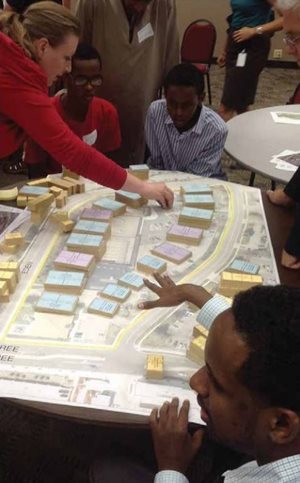 Inclusive and effective TOD planning considers the needs of people across the region and within their communities. Local community engagement should build relationships with local residents, property owners, business owners, and other community stakeholders. Planners can support the capacity of their communities to address issues and affect planning decisions. Doing so can help broaden commitment to implementing plans.
Inclusive and effective TOD planning considers the needs of people across the region and within their communities. Local community engagement should build relationships with local residents, property owners, business owners, and other community stakeholders. Planners can support the capacity of their communities to address issues and affect planning decisions. Doing so can help broaden commitment to implementing plans.
Involving People Who Depend on Transit
Community engagement helps involve a full range of participants, especially those who depend on transit or may have been underrepresented in earlier planning efforts. These include people who do not own cars or cannot drive, communities of color, low-income households, people with disabilities, immigrants, and people with limited English proficiency.
Corridors of Opportunity
There is no a single, all-purpose approach to community engagement. Principles, lessons learned, and community experiences, however, can inform local TOD planning efforts. Corridors of Opportunity was a partnership that supported community organizations in transitway planning and development, including efforts to engage historically underrepresented populations. Based on their work, we recommend:
-
Initiating and maintaining ongoing partnerships with community groups
-
Building relationships with leaders of underrepresented groups
-
Engaging people at convenient times and locations to improve participation
-
Engaging people who will be affected by TOD and involving them in decisions
Resources:
We Can Help!
Metro Transit Community Outreach Coordinators
Sam O’Connell, Manager of Public Involvement
Metro Transit - METRO Green Line and Blue Line Extension Offices
[email protected]
612-373-3815